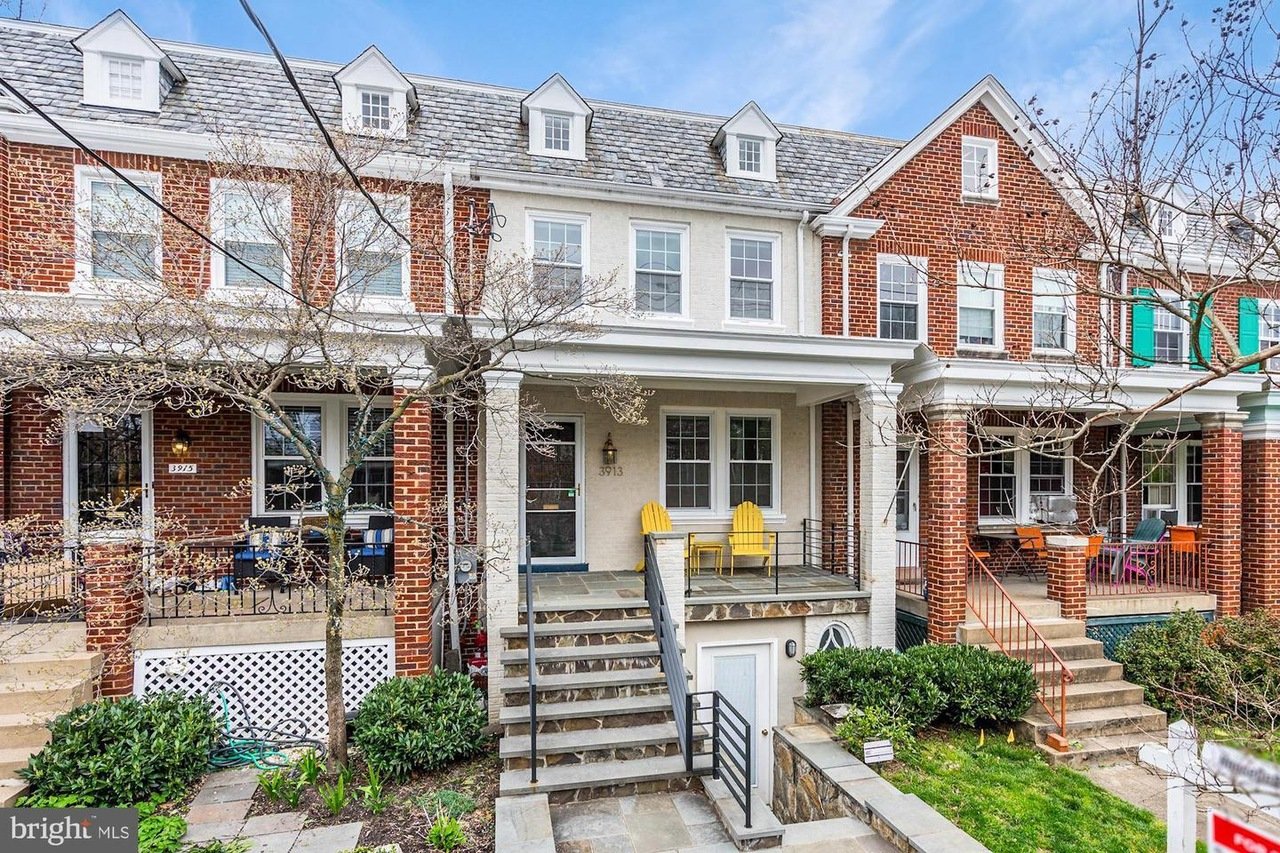Homeowners are shopping for countertops, microwaves, sofas, computer desks, bookshelves, televisions, and stereo equipment–and it's all for one room: the master bedroom.
After years of attention to family rooms, kitchens, and media rooms, people are turning to this more private sanctuary. New homes have enormous master suites, and older homes are being renovated to include them.
"What's new in bedrooms is that people are doing them at all. In the past, the focus was on the living room and the family room," says Deborah Houseworth of DLH Design Studio in Chevy Chase.
"As they get older, people are spending more time in their bedrooms," says designer Lowell Wade of Interior Motives in Alexandria, who sees many clients in their fifties. "It's their private time, away from the rest of the family. They're saying, 'Maybe we should take our turn and really use our room.' This may be their first purchase of real bedroom furniture."
Over the years, a bedroom may have become a dumping ground for odds and ends of furniture, including the stray exercise machine. Maybe there's a computer in the corner, or the whole room has become a closet. One designer tells of a client who was still using a student desk from when he was 12–and not in a nostalgic way.
In the old 10-by-12-foot bedroom, it was easy to turn out the lights, pull the covers over your head, and forget how the room looked. There wasn't space for much more than a bed. But today's larger houses contain master suites as big as studio apartments and often better equipped. A sitting room, walk-in closet, spa bath, fireplace, and even small kitchen make the master bedroom a world unto itself.
What's typical in today's master suites? Remodeling magazine's annual "Cost vs. Value Report," which looks at how much a renovation can add to a home's selling price, provides a clue. Adding or improving a master suite is one project studied each year.
For 2002, the project was to take a 24-by-16-foot space and create a master bedroom with walk-in closet, whirlpool tub, separate three-by-four-foot shower, and double-sink vanity, with ceramic tile for the bathroom floor, carpet in the bedroom, and new paint, lighting, and exhaust fan. In the Washington area, the average cost was $59,600, with the addition to a home's sale price predicted at $49,600, an 83-percent recoup.
That was the midlevel project. Remodeling also created an upscale category: That suite was soundproofed, had in-floor heating, a sitting area, custom bookcases, built-in storage, a gas fireplace with stone hearth and custom mantle, and a mini-kitchen with sink, refrigerator, and cabinetry. Average cost in Washington: $121,700, with $104,800 added to the sale price.
If you're looking for the most return on your remodeling dollar, a master bedroom ranks below adding a bathroom, doing a major kitchen overhaul, or finishing a basement. It does rank above new windows and a new roof.
Designers say that well-traveled Washingtonians see luxuries such as mini-kitchens and towel warmers in hotel rooms and want the same comforts at home. The new "basics" builders are adding include a morning kitchen, with space for a coffee maker, mini-refrigerator, small sink, and cabinetry. It can also be done in a remodeling, most easily if the "kitchen" is placed near the bathroom. Cost: about $2,500, or up to $10,000 for a high-end unit with a microwave and espresso machine, according to Remodeling magazine.
Built-in bookcases and media shelving are also in demand. And buyers want larger closets that have center islands for grooming as well as a window for natural light. In the master bath, large tubs and even larger showers have been common in new homes for several years.
Those remodeling older, smaller homes often create a suite by combining two bedrooms and enlarging a bath, says James J. Lynch, a certified bath designer at F.A. McGonegal, a design-build firm in Falls Church. A master suite can be done inexpensively by "space stealing," according to the National Association of the Remodeling Industry. A bump-out of two to four feet, if it stays behind the roof line, can add more space without the cost of an addition.
Why all this interest in master bedrooms? As houses have gotten bigger–by 700 square feet between 1970 and 2000, according to the National Association of Home Builders–master bedrooms have increased proportionately.
But the interest is being driven by the usual suspects: baby boomers. They are hoping to "age in place," or stay in their homes as long as possible. A master suite that functions almost as an apartment, with a big, accessible bathroom, is one thing that can make that possible.
In the National Association of Home Builders' consumer preferences survey, "What 21st-Century Home Buyers Want," more than half of respondents wanted a master suite on the ground floor, for greatest accessibility. Some want the ground-floor suite for parents who visit or live with them.
Some homeowners make space in a master suite for a home gym or a media center. Others set aside room for a home office. It's a good place to work "because the kids already know the bedroom is a no-fly zone," says Chandler Fox, a certified bath designer with Foxcraft Design Group, a design-build firm in Arlington.
When Washington interior designer Darryl Carter moved into the former chancellery of Oman on Embassy Row, a narrow but deep 9,000-square-foot townhouse, he turned the third floor into a master suite. A graceful four-poster from his furniture line fills the bedroom, which is next to a sitting and media room. There's a small gym and a laundry room. Next comes the bathroom, with a separate room for the shower and three sets of French doors to a balcony. It has two bathtubs, salvaged from the Russian Embassy, and linens are stored in antique barrister cabinets with hammered-glass fronts.
Carter says he actually prefers smaller rooms and put in the two tubs to use up some of the space. The overall effect is warm rather than cavernous.
Super-size suites present a challenge to decorators. "People want bedrooms to be cozy, but in these huge rooms it's hard to make them feel intimate," Houseworth says.
Rich, dark wall color is one trick. Designers say the trend is toward autumn hues but in natural rather than jewel tones. "One that's really big is sage green; it's so soothing for a bedroom," says Lowell Wade.
Another way to make a big bedroom cozier is to use four-poster or canopy beds with lots of draping and layered window treatments to match.
"In these enormous Potomac bedrooms, heavy draping helps to fill the volume," says interior designer JoAnn M. Zwally of Ashton Design Group. "In a room with 12-foot ceilings, you may need more fabric to give some sense of coziness."
Although they may be using more draping on windows and canopies, designers have been backing away from piling beds high with quilts, throws, and pillows. Beds are getting larger, with pillow-top mattresses making them taller. Adding layers can be overwhelming.
In the rest of the house, matched sets of furniture might be frowned upon by designers, but the traditional bedroom set of bed, nightstands, and one or two chests or an armoire can offer a feeling of calm, says Wade. "A set gives you a sense of order," she says.
Another advantage: Sets fit together. With bigger, taller beds, it's harder to find accessory furniture that's in proportion.
Ethan Allen's bedroom lines are constructed to compensate for taller mattresses, either with a low box spring or taller nightstands, says Jamie Barnes, design consultant at the Sterling store. Each set also has an armoire that can be used for clothes storage, display space, or media equipment. Barnes recommends looking for a removable clothes rod and shelves and a slide-out back, so an armoire can accommodate TV and stereo cords. Most of the company's armoires have these as well as wiring for coaxial cable and a power strip.
The typical bedroom set doesn't include seating, so this is where homeowners get to mix and match. You might try a couple of club chairs, or a love seat or two, or a chaise. Bedroom classics, from the days of aristocrats, are slipper and bergère chairs. A slipper chair is a simple, wide, smoothly upholstered chair without arms, where a woman in formal skirts could perch while changing her shoes. Bergères have graceful, sloping arms integrated into both the back and seat of the chair.
"Even if space allows for a sofa in the seating area, I've been doing more intimate groupings, with a desk for her and a love seat or two love seats, or some comfortable chairs," says DC designer Lynda Hughley Camalier.
Some homeowners put a second bed, typically a daybed, in the seating area or at the foot of the big bed. Children's furniture stores such as Pottery Barn Kids have trundles and daybeds that would be at home in a grownup room.
Lighting large rooms can be a challenge. Swing-arm lamps on either side of a bed can provide reading light without taking up valuable nightstand space. A sitting area should be lit like a living room, with several sources of ambient light. Ann Unal, a certified bath designer at Tunis Kitchens & Baths, recommends putting wall-mounted lights on dimmer switches. For safety, consider a light in the shower.
Mini-speaker systems make it easier to get good stereo sound in a bedroom without lots of shelving. Systems that play CDs or MP3s can be just a few inches high.
TVs present more of a challenge. It's not easy laying out a big room so that the television can be seen from the bed but doesn't dominate the room. More clients want televisions in the bedroom, especially those with exercise equipment. Some people want electronics hidden; others don't mind having pieces in plain view. Cabinetry and bath-and-kitchen firms can create built-ins to hide or display gear.
There soon will be no excuse for oversleeping, because alarm clocks that use wireless technology to reset themselves to the US master clock are available. Some models project the time, date, and weather on the ceiling, so you can find out what it's like out there without getting out of bed.


















